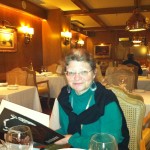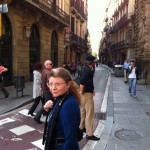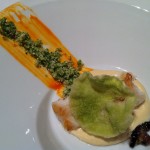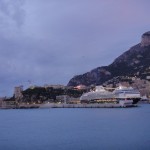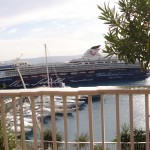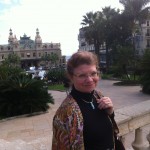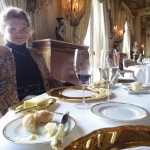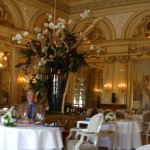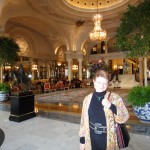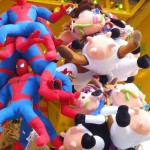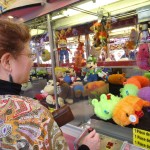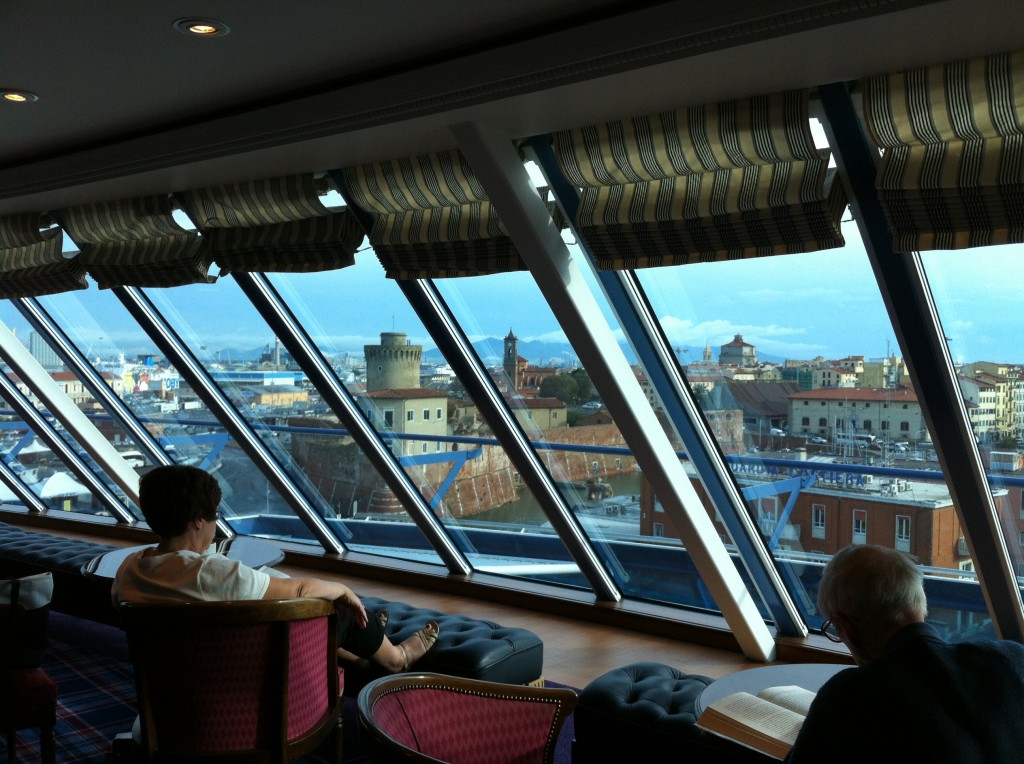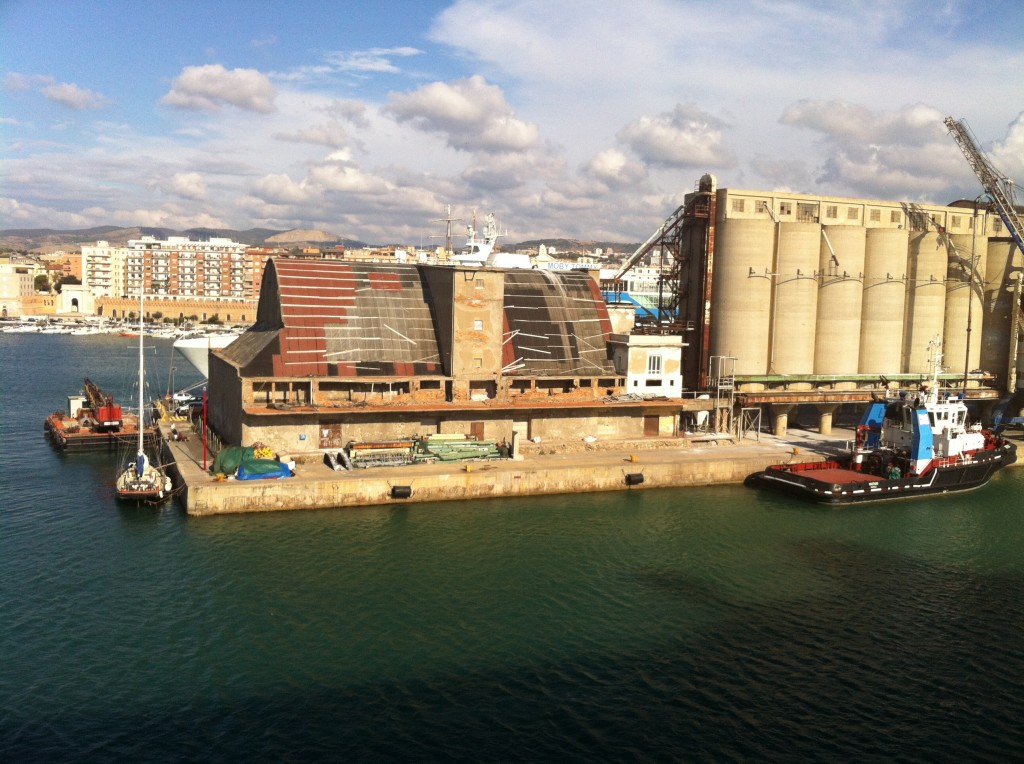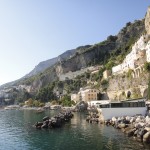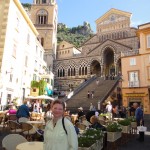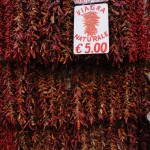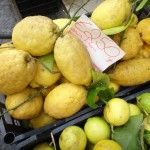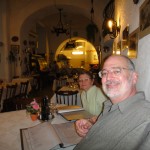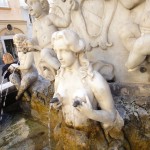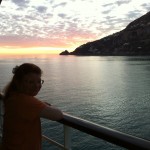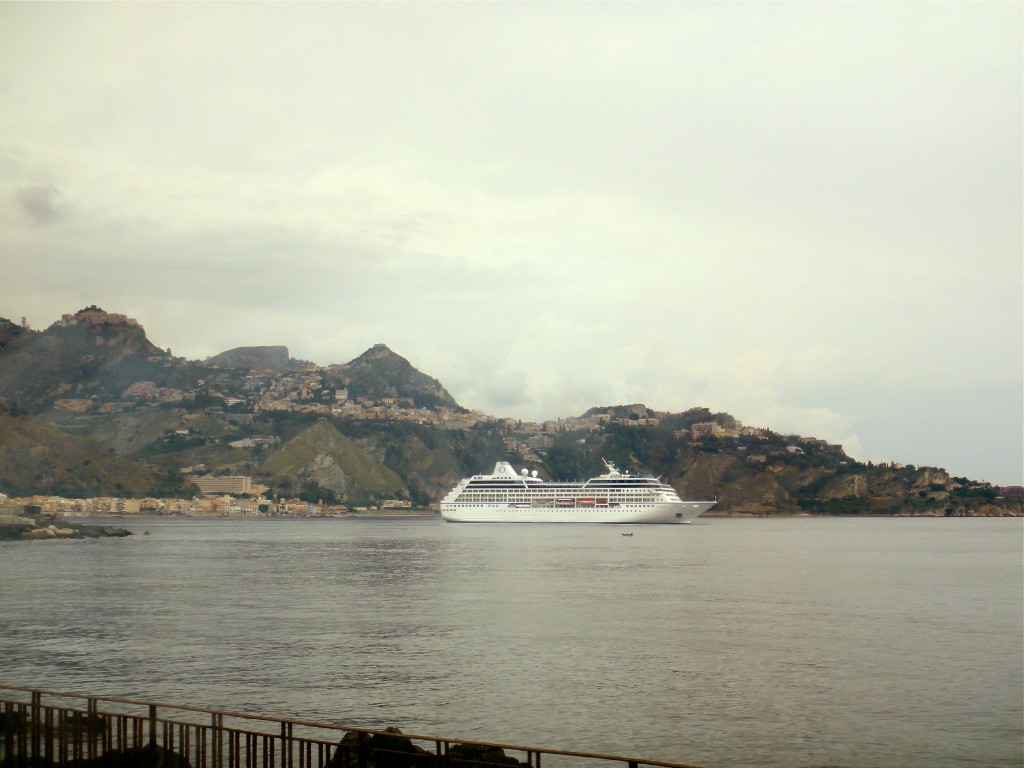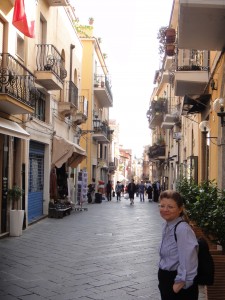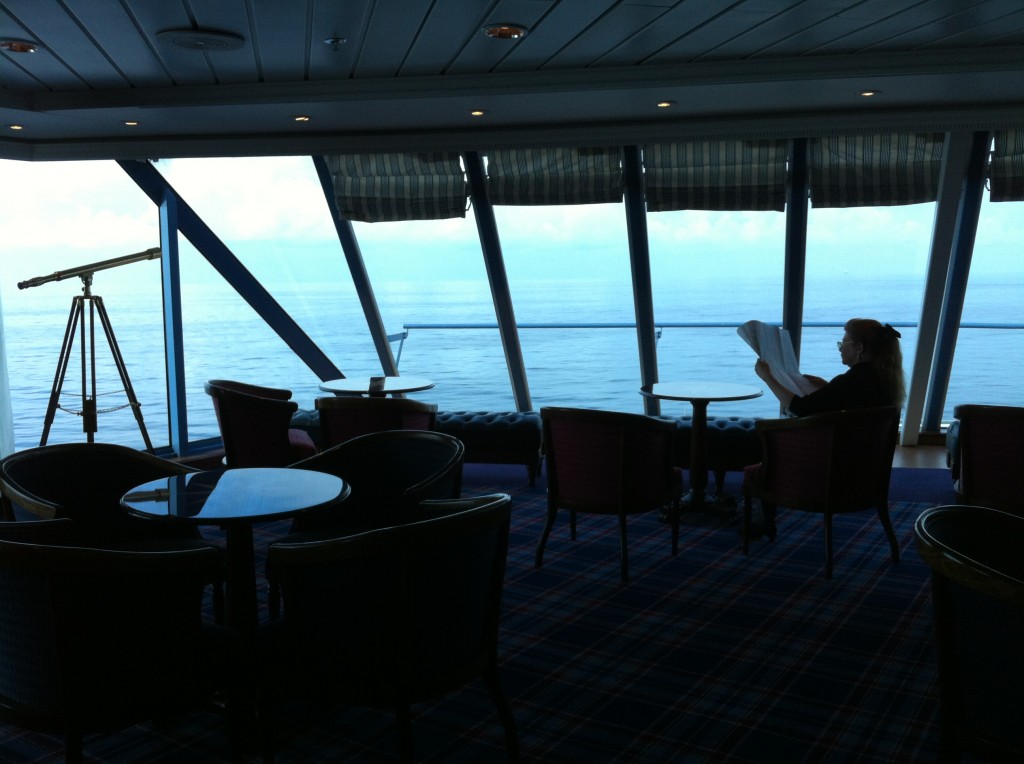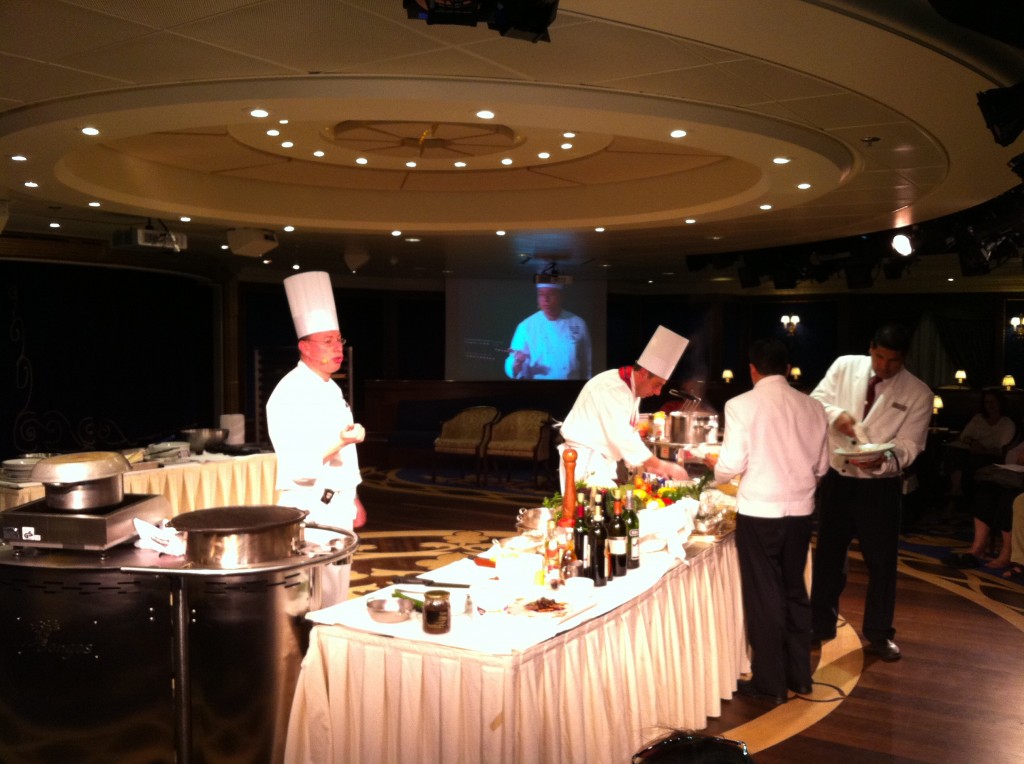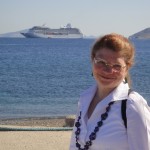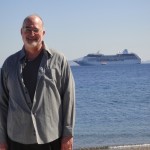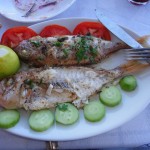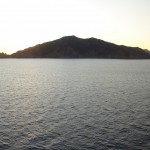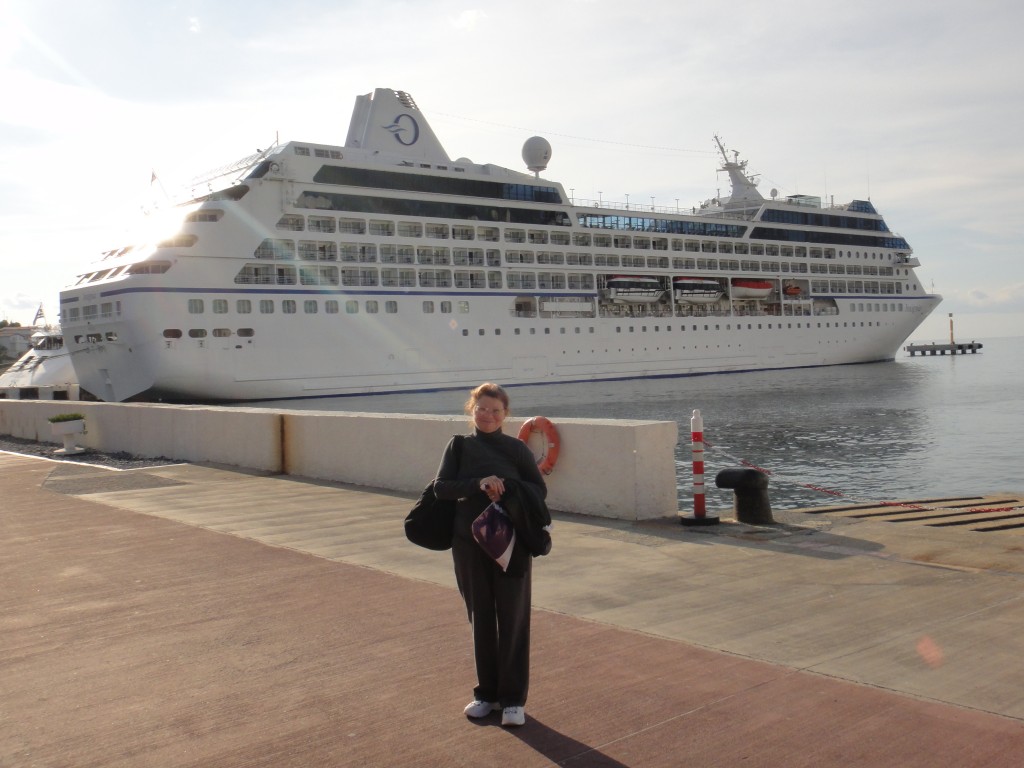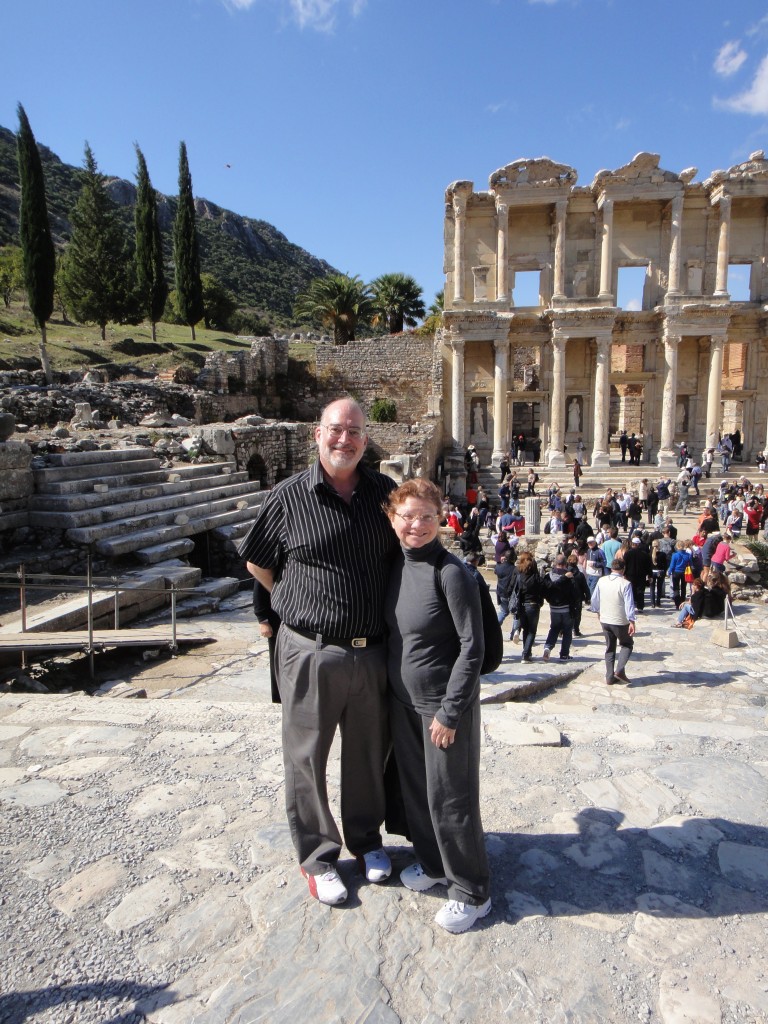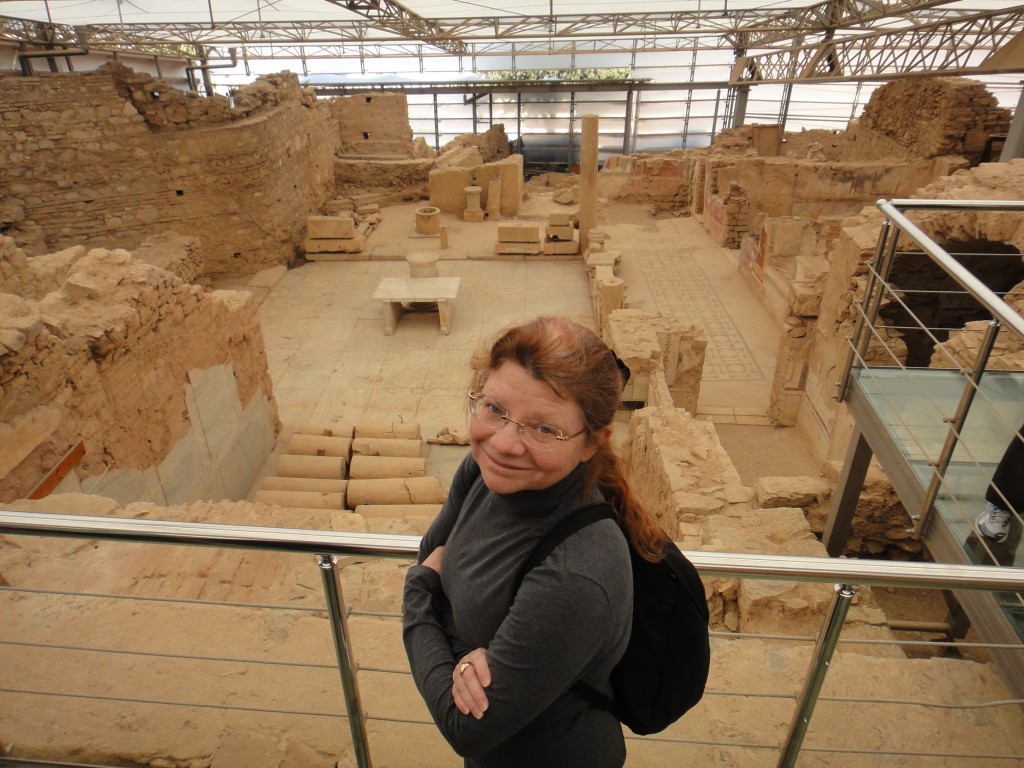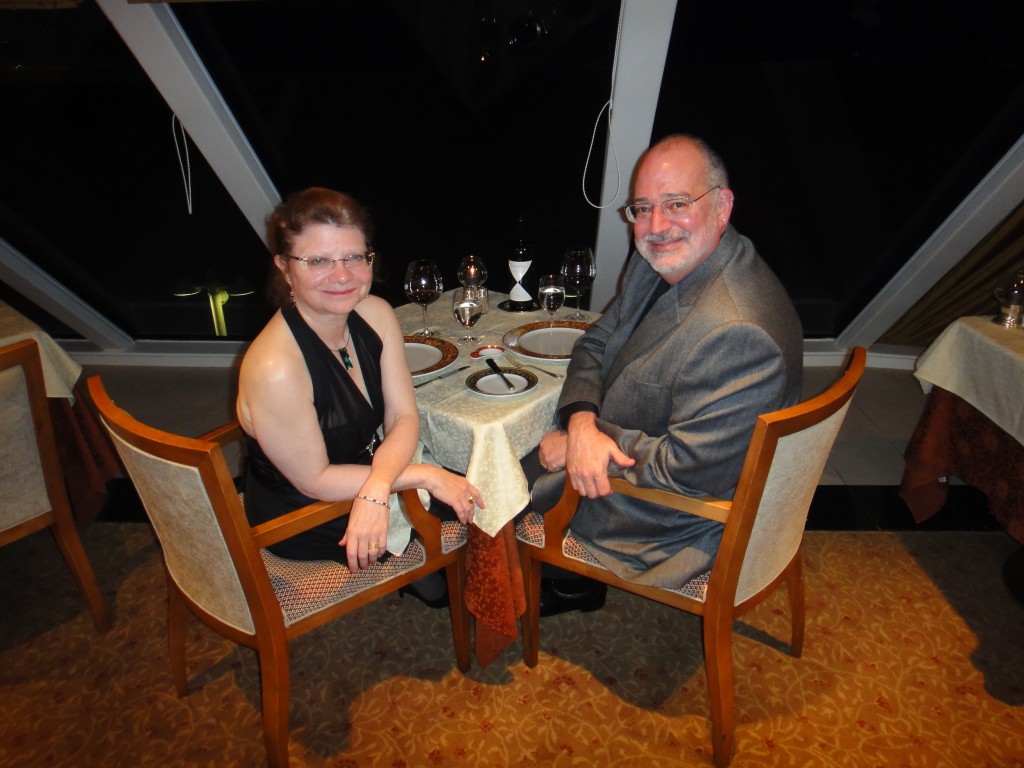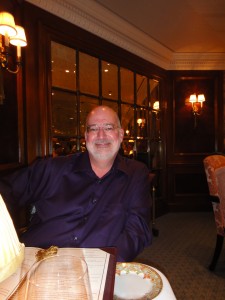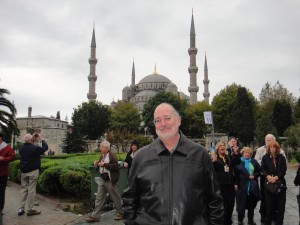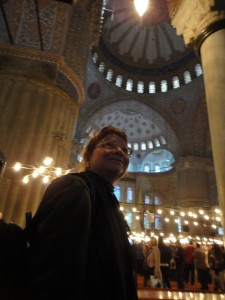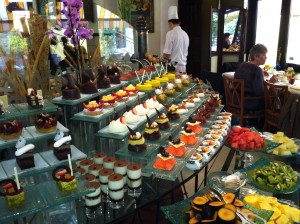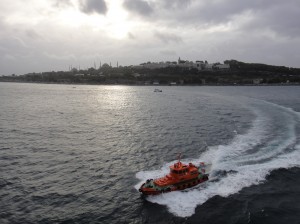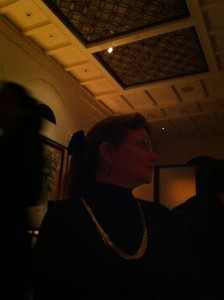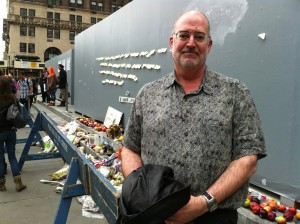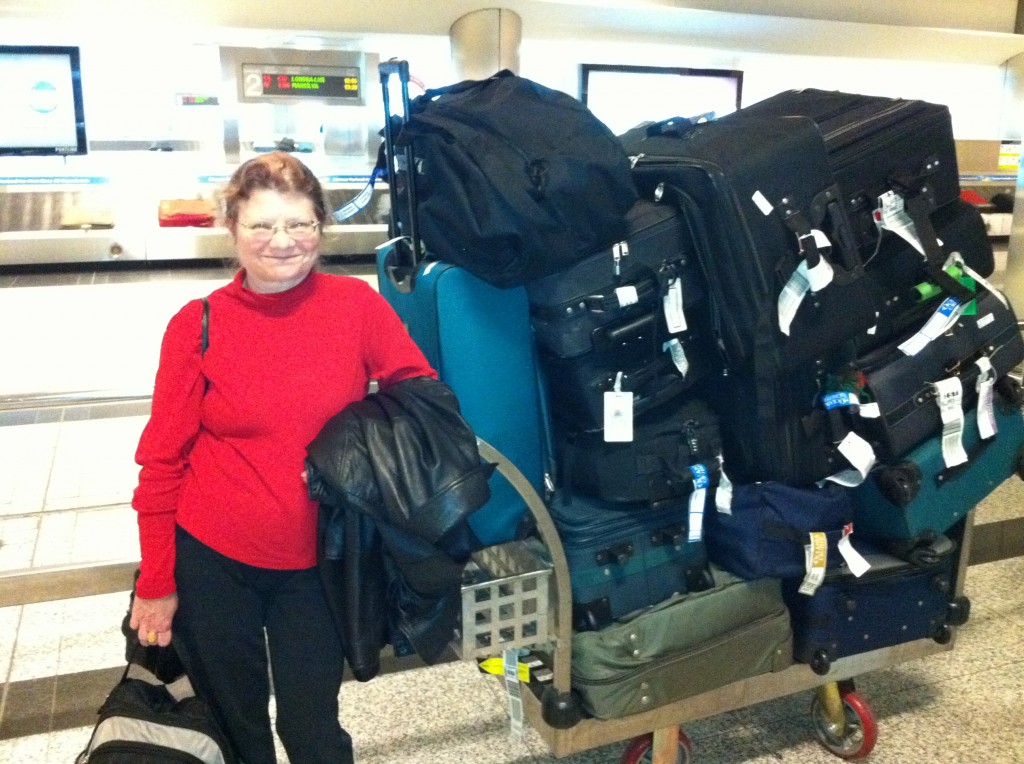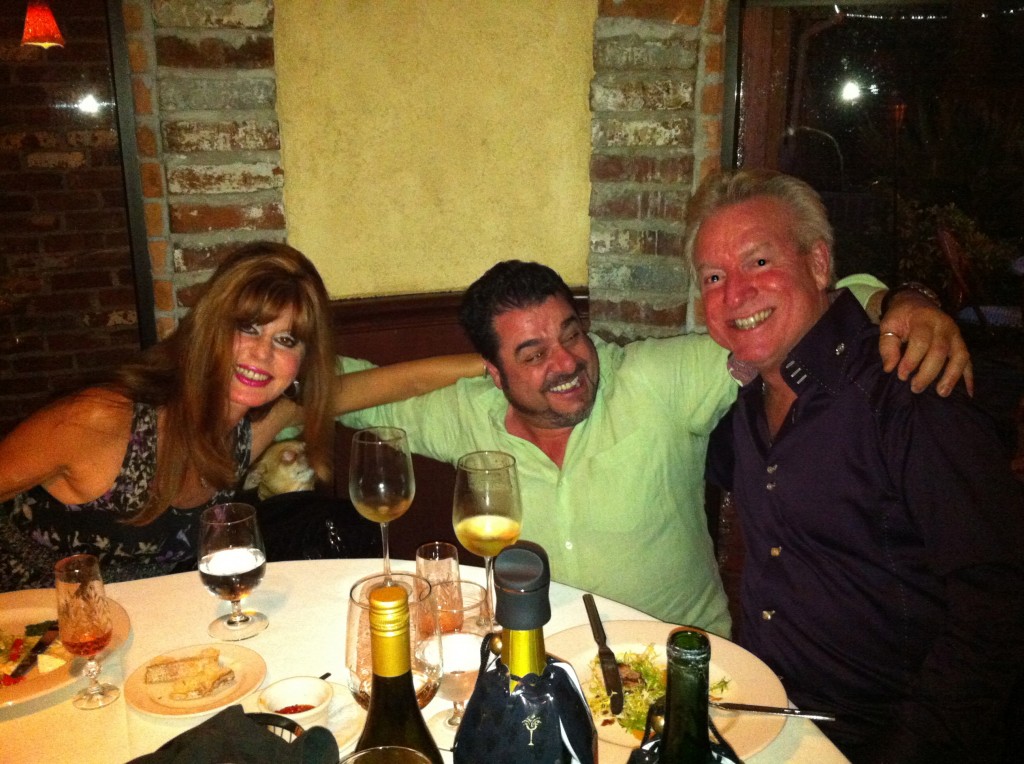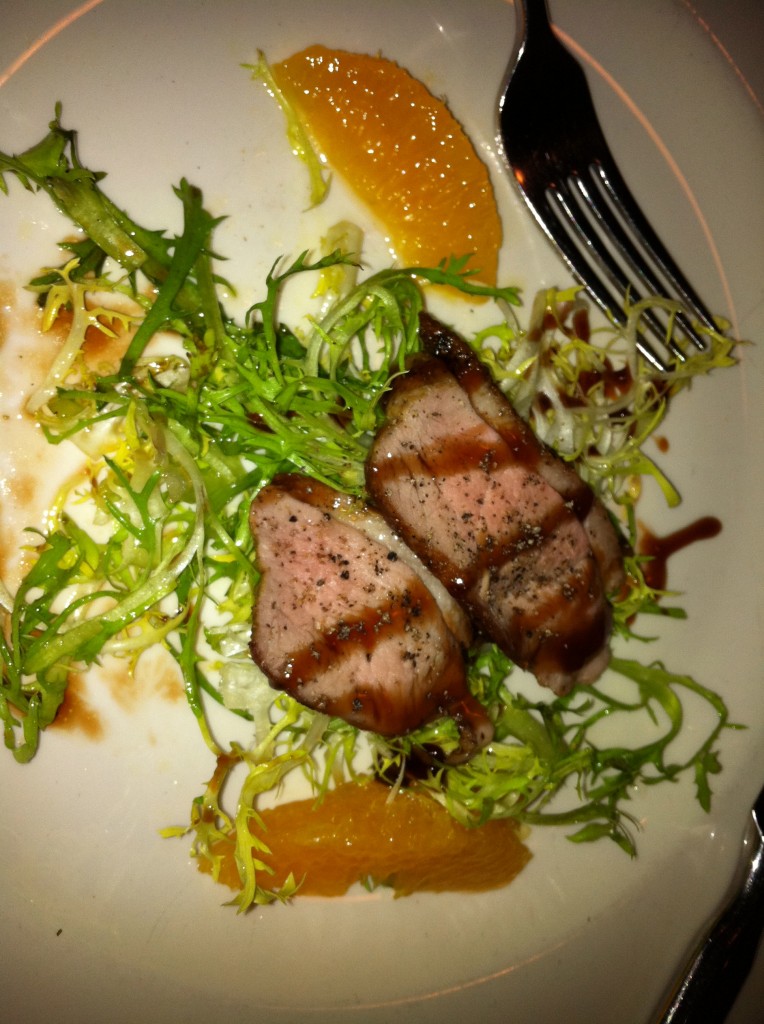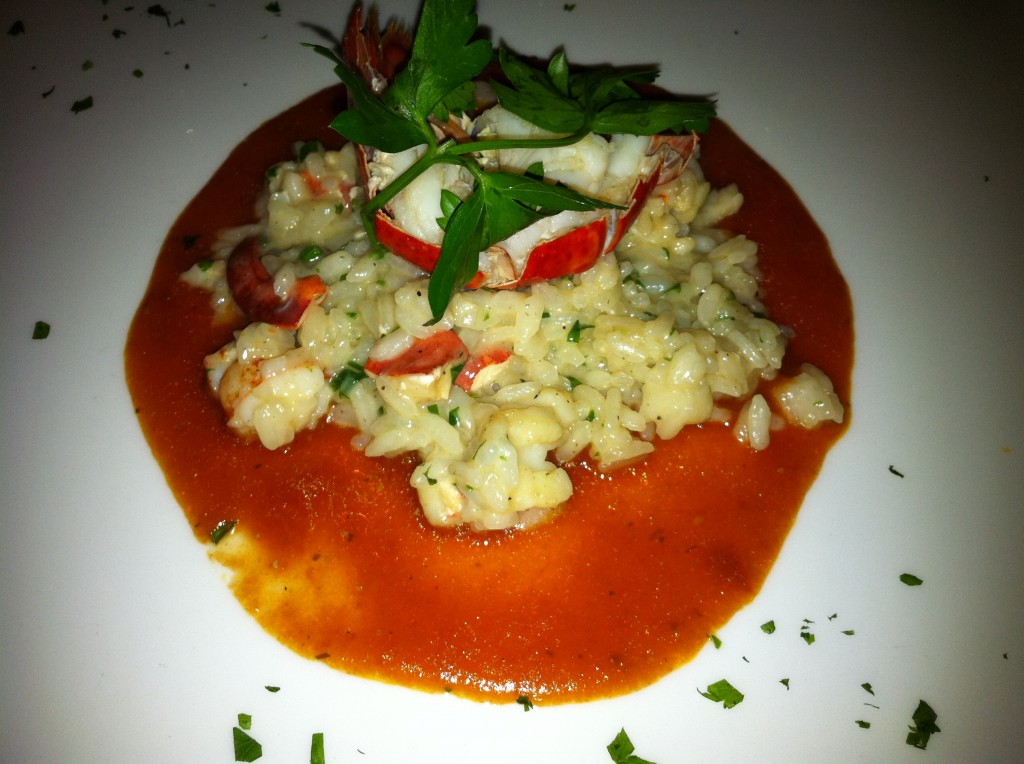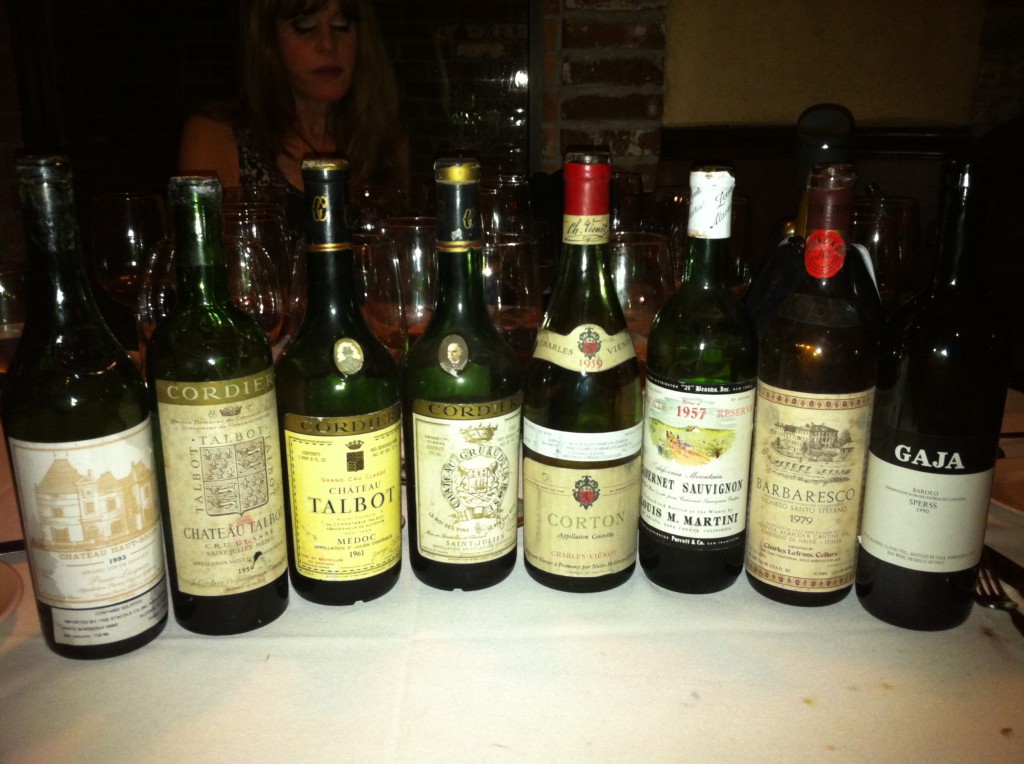Disembarkation in Barcelona is amazingly easy. We simply strolled down the gangway, pointed out our bags to a porter, and were ushered to a taxis. No immigration, no customs. By 10 am we were at the Hotel Condes de Barcelona.
The hotel is actually two building across the street from each other, both on the Gracia, the high end shopping boulevard. Happily, our room was ready. It’s spacious and ultra-modern, with remote controlled drapes and even a Nespresso machine. It’s on the second floor, facing into the courtyard that forms the center of most city blocks in Barcelona. That makes it nice and quiet, because there is almost no street noise. I booked it directly on line, prepaying 219 Euros a night, which is a third of what the cruise line wanted for the same hotel, and a third of the price of the other hotels on the street, such as the Mandarin. Best of all, there’s a two-star Michelin restaurant, La Sarte, downstairs.
For lunch we walked up the Gracia, admiring the Gaudi architecture. Our destination was Botafumeira, a seafood restaurant recommended by Ron. Everything is on a later schedule in Barcelona, with restaurants not opening until 1pm for lunch, and 8:30 for dinner. We waited a bit in the front, admiring the huge tanks and refrigerators filled with every kind of shellfish, from tiny barnacles to huge lobsters. Then we were ushered deep into the building, to a lovely dining room, one of many, done in light woods and nautical decor.
The meal began with Champagne cocktails. I was a bit alarmed when they were poured from a bottle of Pommery, but when the bill came they were just 10 Euros. We also had a delightful Catalonian chardonnay by Jean Leon. The highlight of the meal was an enormous platter of grilled seafood, with multiple kinds of lobster, shrimp, crayfish, clams and other shellfish, accompanied by many mysterious implements.
By the time we left, well after 3pm, the place was packed, and the area in front around the seafood bar was deafening, so it was definitely a good thing we had a reservation.
After lunch we strolled back down the Gracia, stopping to buy some gifts and stocking stuffers, and then settled into a long siesta in preparation for dinner.
Dinner was at La Sarte, the two star Michelin restaurant in the other half of the hotel. There were many beautiful dishes, but none was really a home run, taste-wise, except for the first dessert, which was a frozen sorbet of gin, lemon juice and a basil drizzle that I’d like to try to reproduce. Pricing was very reasonable, though, even on the wines, and it was nice to simply cross the street to be back in our room by midnight. (The restaurant was still more than half full at that hour, as some arrived for dinner at almost 11pm).
Sunday we slept in, enjoying the hour time change (which is a week earlier than in the US), and then walked down La Rambla, the wide tourist boulevard that connects to the southern end of the Gracia. We arrived early for our 3pm lunch reservation at L’Olive, a place near our hotel suggested by American Express, and enjoyed a leisurely three-hour lunch and a nice bottle of Priorat, Veuve Cliquot Champagne, and a very generous pour of 1982 Armagnac. Wine prices were very reasonable.
Then it was siesta time, in preparation for our final day of travel.

